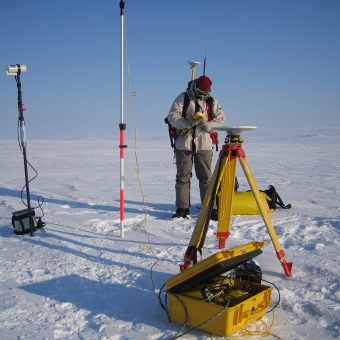Diamond
Diamond is composed largely or pure carbon. Diamonds form in the earth’s mantle under high pressure and temperature and are brought to the surface by volcanoes known as kimberlites or lamproites.
Diamond is best known for it’s use in jewelry. However, diamond’s unique properties also make it ideal for use in other industrial applications. Diamond is the hardest known natural substance, is chemically resistant and has the highest thermal conductivity of any natural material. Due to these factors diamonds are extremely useful cutting, polishing and drilling tools. Diamond’s high index of refraction, high dispersion, and adamantine luster enable it to be used in specialty lenses where durability and performance are required. New uses for diamond are cropping up in the cosmetics and medical industries.
Featured Projects
Exploration Challenges
Diamonds occur at very low concentrations. Other minerals associated with diamond, called indicator minerals, are used during the exploration process to identify the presence of kimberlites and potentially diamonds in an area. Understanding the field relationships of indicator mineral dispersions and the geochemical signatures of the indicator minerals themselves is key to finding kimberlites and assessing their diamond content.
How APEX Helps
APEX has extensive experience overseeing a wide range of grassroots to mine feasibility diamond exploration programs. APEX services related to diamond exploration include:
- Discovery and exploration management – from till sampling to bulk-diamond testing and economic modelling
- Kimberlite targeting and exploration including geophysical surveying and sampling – rock, soil, till, HMC
- Advanced mini-bulk diamond evaluation
- QA/QC expertise associated with kimberlite sampling, chain of custody, analytical work including laboratory audits
- Detailed diamond and inclusion analysis including diamond morphology, inclusion extraction, inclusion polishing, microprobe and ICP-MS analysis
- Diamond analysis, including carbon isotopes analysis, nitrogen content; and Fourier Transform Infrared Analysis (FTIR) diamond typing
- Kimberlite age dating
- Whole rock geochemical analysis
- Independent National Instrument 43-10 reporting and JORC Technical Reporting.
- Interpretation of kimberlite-indicator mineral and mantle geochemistry;
- Advanced kimberlite lithological modelling and bulk rock testing.









